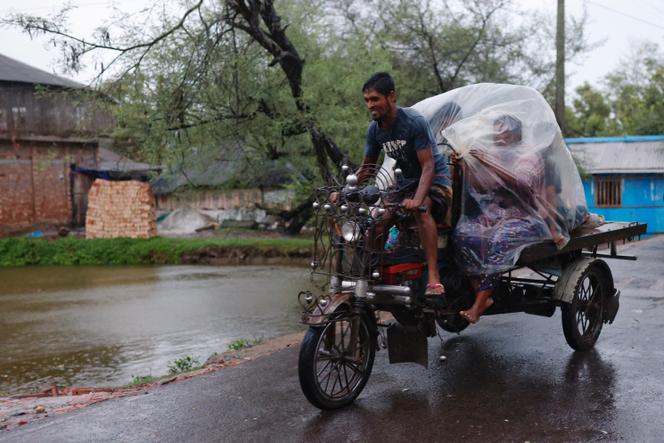


A cyclone flooded coastal villages and left hundreds of thousands of people without power on Monday, May 27, after making landfall overnight along India’s West Bengal state and Bangladesh, where nearly 800,000 residents had evacuated.
Cyclone Remal started lashing Bangladesh’s southern coast late Sunday and was expected to take five to six hours to cross the vast coastal region, Bangladesh’s Meteorological Department in Dhaka said early Monday.
TV stations reported that dozens of Bangladeshi coastal villages were flooded as many flood protection embankments were either washed away or damaged by the force of the storm surges. Authorities gave no casualty figures yet, but Dhaka-based Somoy TV reported that at least two people died.
Moderate to heavy rainfall had been forecast in coastal districts in India’s West Bengal state. A 1-meter storm surge was expected to flood low-lying coastal areas. The India Meteorological Department expected Remal to reach maximum wind speeds of up to 120 kilometers per hour, with gusts up to 135 kph in the area of West Bengal’s Sagar Island and Bangladesh’s Khepupara region on Sunday night.
9,000 cyclone shelters
On Sunday, Bangladesh evacuated nearly 800,000 people from vulnerable areas. Bangladesh’s junior minister for disaster management and relief, Mohibur Rahman, said volunteers have been deployed to move the evacuees to up to 9,000 cyclone shelters. The government also closed all schools in the region until further notice.
India’s Kolkata airport was closed for the day on Monday. Bangladesh shut down the airport in the southeastern city of Chattogram and canceled all domestic flights to and from Cox’s Bazar. Bangladesh also suspended loading and unloading in the country’s largest main seaport in Chittagong and moved more than a dozen ships from jetties to the deep sea as a precaution.
Remal was the first cyclone in the Bay of Bengal ahead of this year’s monsoon season, which runs from June to September. India’s coasts are often hit by cyclones, but changing climate patterns have increased the storms’ intensity, making preparations for natural disasters more urgent.

